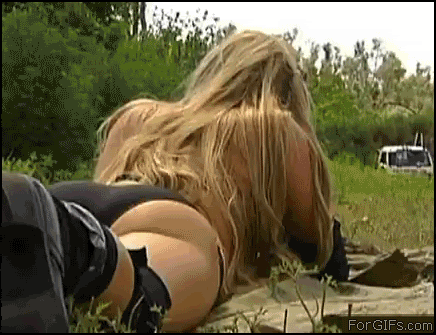Recoil is your friend... not really.
BLUF: Bottom Line Up Front, everything you can do to reduce, minimize, eliminate recoil, do it.
When a gun fires, it causes an inverse reaction to the shooter; this is basic physics. To be specific, it's Newton's third law: For every action, there is an equal and opposite reaction.
The lower recoil, or ability of the shooter to manage recoil is one of the major advantages of the 9mm over it's competitors: .40, .45, .357Sig. The only other firearm caliber that is widely respected as an 'equal' to those calibers is the FN 5.7. The infamous Kel-Tec PMR in .22WMR (.22 Magnum) is relatively the same recoil as the 5.7.
Yes, I'm primarily talking about pistols, but rifle recoil can be a big deal, here is a significant injury caused by recoil by improper technique (holding against bicep, vice the pocket of the shoulder (proper)):

With proper technique and padding, recoil can be greatly minimized.
The most important issue regarding recoil is the time it takes for a shooter to get back on target. Recoil disrupts the shooters sight picture, moving their sight alignment to a different degree depending on the level of recoil. The time it takes for the shooter to reacquire a proper sight alignment is the major detriment to recoil. This is why generally 9mm is better than most other calibers, is because the recoil is less, and the shooter can more execute follow up shots.
Generally the lower the bore axis, the lighter the recoil. Likewise a heavier gun will generally have less recoil because the weight of the gun itself affects Newton's third law. Also, the tighter, stronger, and higher the shooter grips on the gun, the quicker the recovery from recoil.
Here is a gif of a fairly light weight shooter, firing a relatively heavy caliber rifle; you can easily see the recoil response in the shooter. Now imagine if that shooter were firing a .22LR or other light caliber rifle, the recoil response would be much lower, and she would be able to fire repeated shots much more quickly and accurately.

Here is an excellent discussion about recoil: http://recoilisnotyourenemy.blogspot.com
As is this guest contributor to Chuck Hawk's excellent blog: http://www.chuckhawks.com/recoil_management.htm
This is a pretty good video about recoil:
Just break it up, let me ask, what the heck is she shooting, .50 cal?

Rifle recoil, shotgun too, they are both much more different than with pistol shooting. Most semi auto pistols will have a malfunction if you 'limp wrist', or hold the gun too much like a wimp (wimpily?). Recoil in a handgun is much more significant than with a rifle. Most shooters have enough body mass that shooting a rifle doesn't matter quite as much as with a handgun. Said better, rifles are much more forgiving with regard to recoil management.
This is probably the best description and demonstration of recoil management video I was able to find in my quick search:
Bottom line is that proper technique and strength, are more important than caliber or bore axis.
BLUF: Bottom Line Up Front, everything you can do to reduce, minimize, eliminate recoil, do it.
When a gun fires, it causes an inverse reaction to the shooter; this is basic physics. To be specific, it's Newton's third law: For every action, there is an equal and opposite reaction.
The lower recoil, or ability of the shooter to manage recoil is one of the major advantages of the 9mm over it's competitors: .40, .45, .357Sig. The only other firearm caliber that is widely respected as an 'equal' to those calibers is the FN 5.7. The infamous Kel-Tec PMR in .22WMR (.22 Magnum) is relatively the same recoil as the 5.7.
Yes, I'm primarily talking about pistols, but rifle recoil can be a big deal, here is a significant injury caused by recoil by improper technique (holding against bicep, vice the pocket of the shoulder (proper)):

With proper technique and padding, recoil can be greatly minimized.
The most important issue regarding recoil is the time it takes for a shooter to get back on target. Recoil disrupts the shooters sight picture, moving their sight alignment to a different degree depending on the level of recoil. The time it takes for the shooter to reacquire a proper sight alignment is the major detriment to recoil. This is why generally 9mm is better than most other calibers, is because the recoil is less, and the shooter can more execute follow up shots.
Generally the lower the bore axis, the lighter the recoil. Likewise a heavier gun will generally have less recoil because the weight of the gun itself affects Newton's third law. Also, the tighter, stronger, and higher the shooter grips on the gun, the quicker the recovery from recoil.
Here is a gif of a fairly light weight shooter, firing a relatively heavy caliber rifle; you can easily see the recoil response in the shooter. Now imagine if that shooter were firing a .22LR or other light caliber rifle, the recoil response would be much lower, and she would be able to fire repeated shots much more quickly and accurately.

Here is an excellent discussion about recoil: http://recoilisnotyourenemy.blogspot.com
As is this guest contributor to Chuck Hawk's excellent blog: http://www.chuckhawks.com/recoil_management.htm
This is a pretty good video about recoil:
Just break it up, let me ask, what the heck is she shooting, .50 cal?

Rifle recoil, shotgun too, they are both much more different than with pistol shooting. Most semi auto pistols will have a malfunction if you 'limp wrist', or hold the gun too much like a wimp (wimpily?). Recoil in a handgun is much more significant than with a rifle. Most shooters have enough body mass that shooting a rifle doesn't matter quite as much as with a handgun. Said better, rifles are much more forgiving with regard to recoil management.
This is probably the best description and demonstration of recoil management video I was able to find in my quick search:
Bottom line is that proper technique and strength, are more important than caliber or bore axis.





 . When I'm shooting a pair of single-action revolvers, I use the return from recoil to cock the hammer on the way down. Since the recoil torques the revolver in my hand, it brings the hammer closer to my thumb. Riding the hammer down to the next sight saves some time so the revolver is ready to fire when aiming at the next target. It works even better when running two SAAs shooting Gunfighter. I'd link a video but I'm at work and YouTube is blocked.
. When I'm shooting a pair of single-action revolvers, I use the return from recoil to cock the hammer on the way down. Since the recoil torques the revolver in my hand, it brings the hammer closer to my thumb. Riding the hammer down to the next sight saves some time so the revolver is ready to fire when aiming at the next target. It works even better when running two SAAs shooting Gunfighter. I'd link a video but I'm at work and YouTube is blocked.
 My LCR .38 hurts my sensitive hands.
My LCR .38 hurts my sensitive hands.